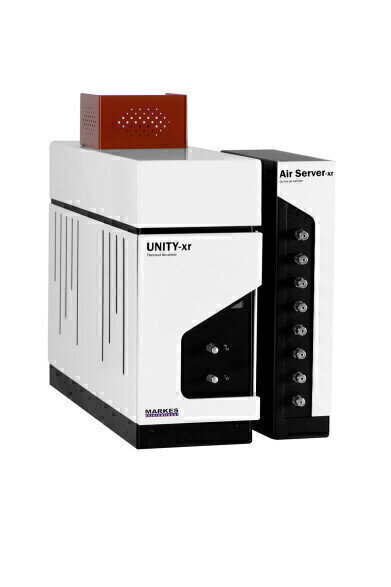-
 Markes UNITY-Air Server-xr
Markes UNITY-Air Server-xr
Air Monitoring
Air monitoring equipment from Markes International comes top in US EPA field trials
Oct 04 2016
Markes International (Cincinnati, OH, USA) has come first and second in independent field-trials of air monitoring equipment carried out by the US Environmental Protection Agency.
The results of this second rigorous phase of assessment were announced on 10 August to an audience of air-monitoring experts at the National Ambient Air Monitoring Conference in St Louis, MO, and re-inforce the results of the 2014 laboratory trials, in which Markes’ systems also came out on top.
The report summarises the results of two intensive 45-day field assessments of six commercially-available air monitoring systems, organised to assess their suitability for continuous monitoring of 28 volatile organic air pollutants by the US network of Photochemical Assessment Monitoring Stations (PAMS).
From a performance perspective, both the Agilent/Markes TD–GC–dual FID system and the Thermo Scientific/Markes TD–GC–MS setup showed clearly superior results to all other instruments. Both systems were able to report on 100% of the target compounds, had very low levels of instrumental bias, and showed excellent precision between replicate measurements.
Dr Massimo Santoro, Technical Marketing Director at Markes, said, “We’re absolutely delighted to have come out on top in both the laboratory and field trials for this EPA assessment, and believe these results are a strong endorsement both of our TD systems and the close collaborations we enjoy with Agilent and Thermo Scientific. It’s worth noting that although the assessment focused on compounds of relevance to urban air pollution, the same equipment is also ideal for monitoring a wide range of volatile organic compounds, including odorous sulfur species.”
Since 1993, the PAMS program has required US states and local environmental agencies to measure volatile hydrocarbons in urban areas affected by significant ground-level ozone pollution. Much of the air monitoring equipment in the current network is now over 15 years old and needs replacing, so the US EPA commissioned these laboratory and field trials in order to inform the choice of the best automated GC technologies for the purpose.
Dr Santoro adds “As well as assisting those choosing equipment to be used in the US PAMS network, we believe that this authoritative report will be inspected closely by air-monitoring laboratories worldwide that are keen to choose the best system for their own programmes. Technical capabilities are of course fundamental to this, but it’s worth pointing out that the report also describes in detail the practicalities of using the candidate systems. In this regard too, Markes’ systems impressed the assessors with their outstanding ease-of-use, complementing the headline benefits of analytical performance.”
The full report will be made publicly available by US EPA at a later date, but ?the report of the first (laboratory) phase? is available on the US EPA website, and a press release on that part of the project can be found on the Markes news pages.
Digital Edition
IET 34.2 March 2024
April 2024
Gas Detection - Biogas batch fermentation system for laboratory use with automatic gas analysis in real time Water/Wastewater - Upcycling sensors for sustainable nature management - Prist...
View all digital editions
Events
Apr 22 2024 Hannover, Germany
Apr 22 2024 Marrakech, Morroco
Apr 23 2024 Kuala Lumpur, Malaysia
Apr 23 2024 Kintex, South Korea
Apr 23 2024 Edmonton, AB, Canada

















